I didn’t even realize it and two years have passed since I published my first and only article on the 35mmc blog. Even then, at the end of the article about my fascination with analog photography and photos from Iceland, I wrote that I had prepared a few series of photos from my native Slovakia and I would like to publish them elsewhere than on Instagram.
What has changed since then? I still use the great Mamiya RB67 camera, to which the Sekor 250mm was added, and I still enjoy analog photography just as much, if not more. I stopped using Kodak TriX because I still have problems printing the cover paper onto the negative. I currently have trouble finding a Berger Pancro 400 in Slovakia, so I stick with the reliable Ilford HP5. I get a lot of questions about light metering and how I deal with it. I use an old Sverdlovsk 4 exposure meter, which is reliable and small in size, but I plan to get a Spot exposure meter and really learn zone metering. I was looking for something from Pentax, as they are quite affordable, but if you have any other tip, I will be glad if you write to me in the comments.
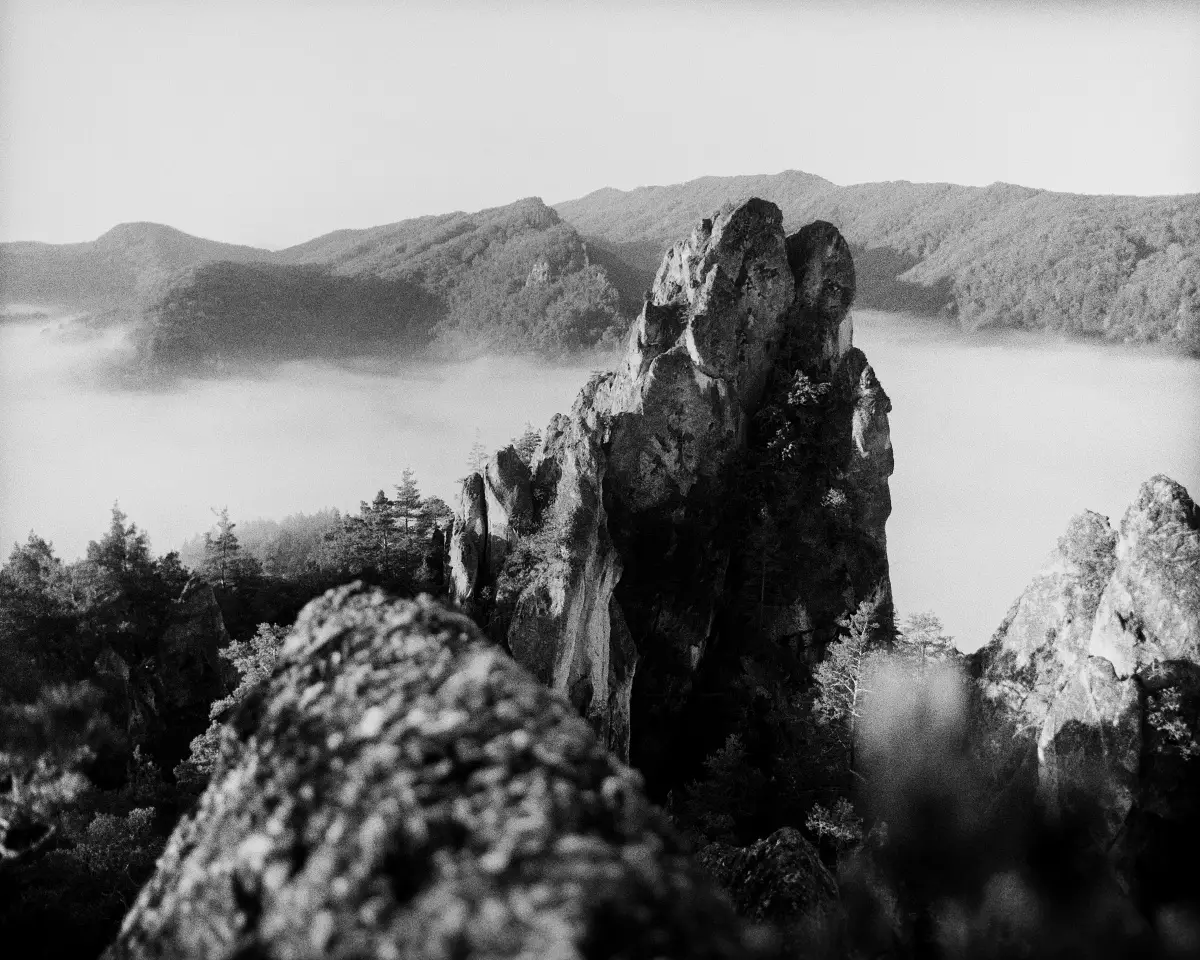
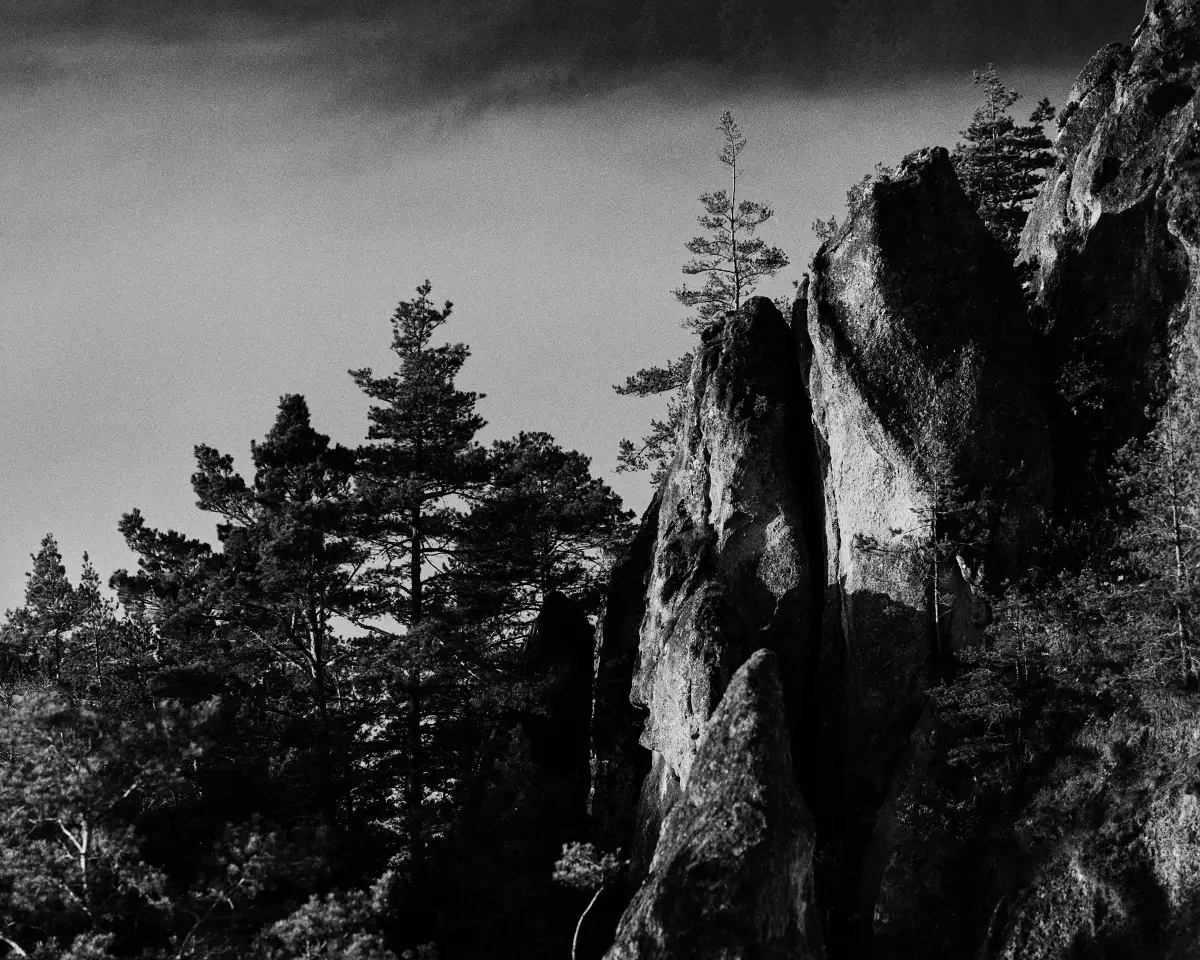
As for the photos, they were all taken around my home, that’s why I called the series Home. They characterize the country in which I live, the Súľovské mountains. It is a home that is in the middle of the mountains, you will find interesting rock towns, forests, it is a landscape that is shrouded in mystical fog after rain or in autumn. The mountains are not particularly high, the highest peak Veľký Manín is barely 900m above sea level (890.6 exc.). But they are very accessible, you don’t need to walk all day to get to some interesting place, half an hour is all it takes and you already have wonderful views of the landscape and various rock formations. The international long-distance route E3 even runs through the central part, so you only need to start in Portugal in Cabo de Sao Vicente or Cádiz and you can walk 6,950 km through the Súľovské vrchy to Istanbul… Of course, if you want to wander all day, or spend the night in the forest, or at some viewpoint, is not a better place.
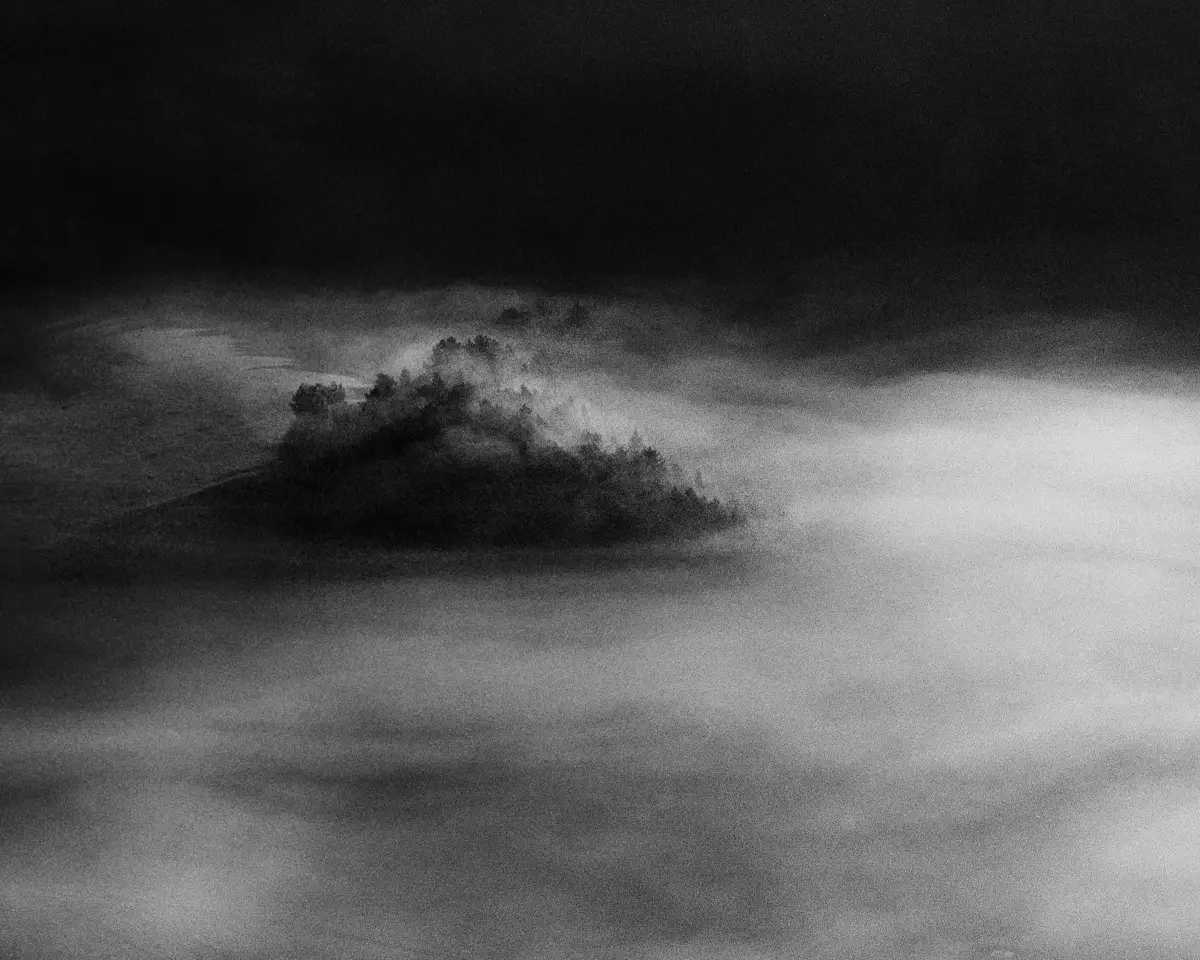
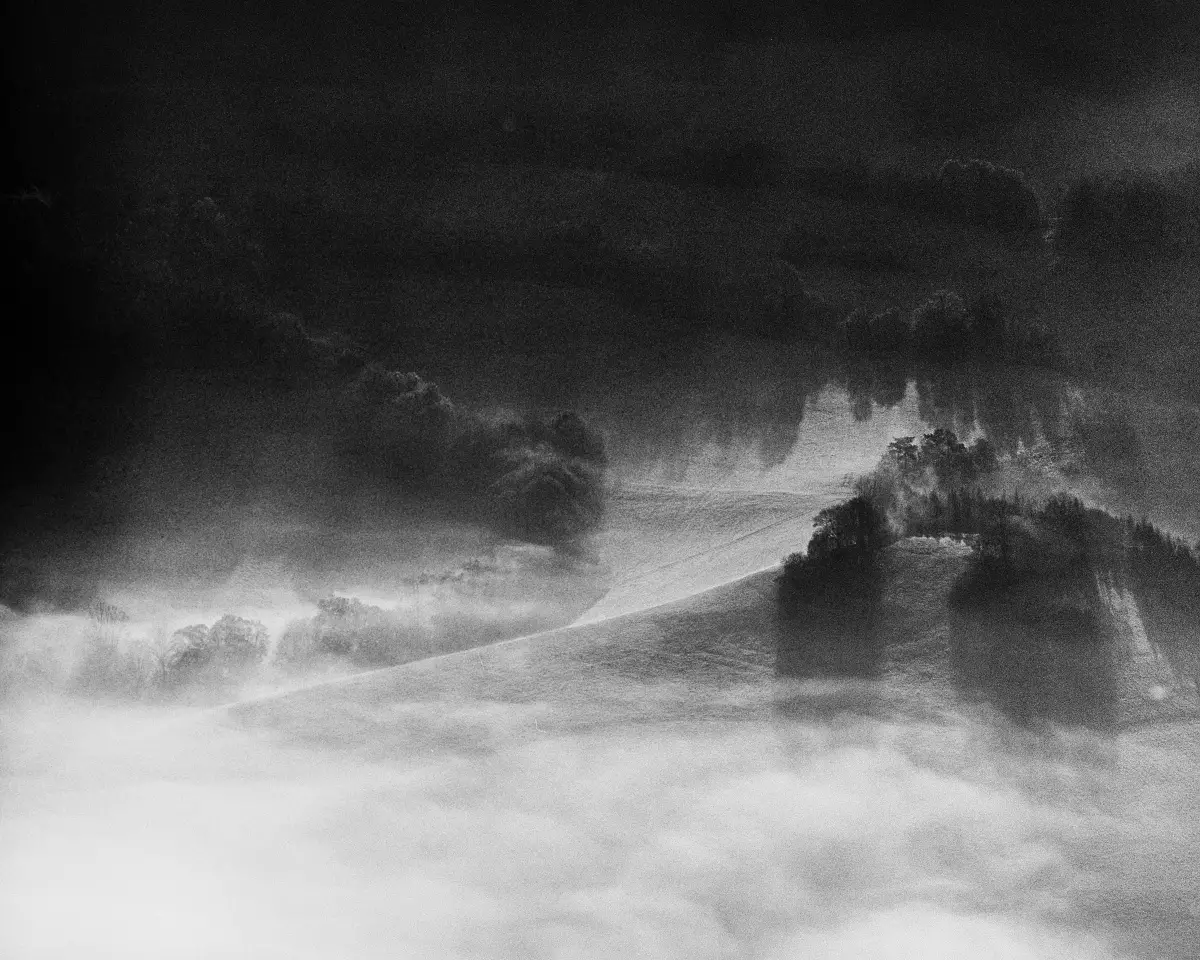
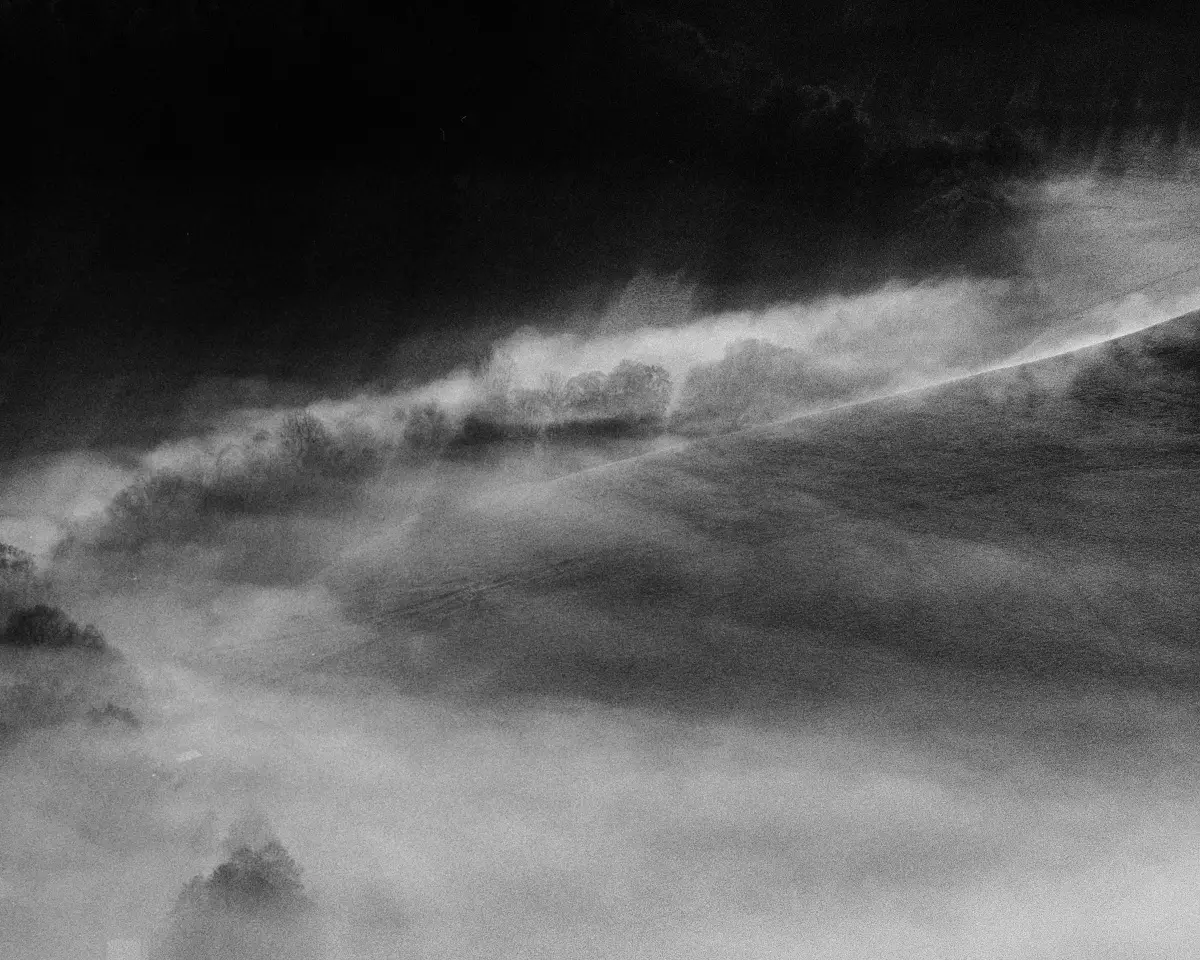
The photos from this series were also created under different circumstances and during several visits. I almost always wear Mamyia on a trip in the mountains, whether I’m going specifically to take photos or just for a walk. There were days when I didn’t take any pictures, even though the forecast promised a foggy morning and great conditions. But over the years I spent behind the lens, I have already learned that it is not necessary to bring a photo from every trip and it is much more important to enjoy every moment spent in nature. Even if you carry all the equipment on your back completely unnecessarily. And then there will be a situation where, at the end of the summer, you and a good friend will spend the night at the viewpoint on Veľký Manín. You don’t plan to take pictures, even if you carry the equipment, of course, what if by accident. On the way out, you are so engrossed in the debate that you get lost in the forest. When you finally find the way, it’s already dark, but you’ll still enjoy a great evening. Then you lie in the hammock, a million stars above your head and fall asleep with the feeling of a well-spent day. And you wake up in the morning, fog below you, an inversion rolling over the houses scattered across the valley, and you don’t know what to do first to take pictures.
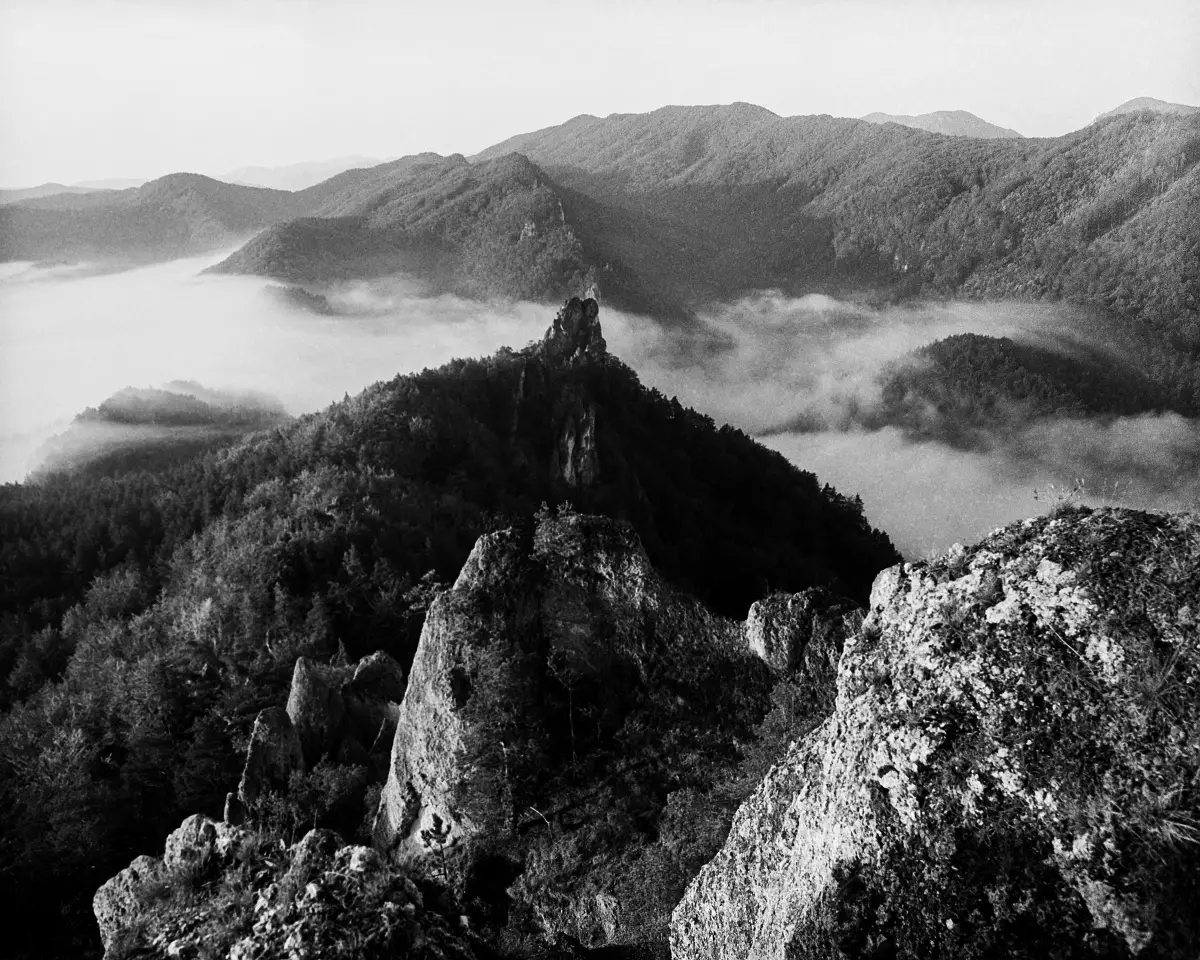
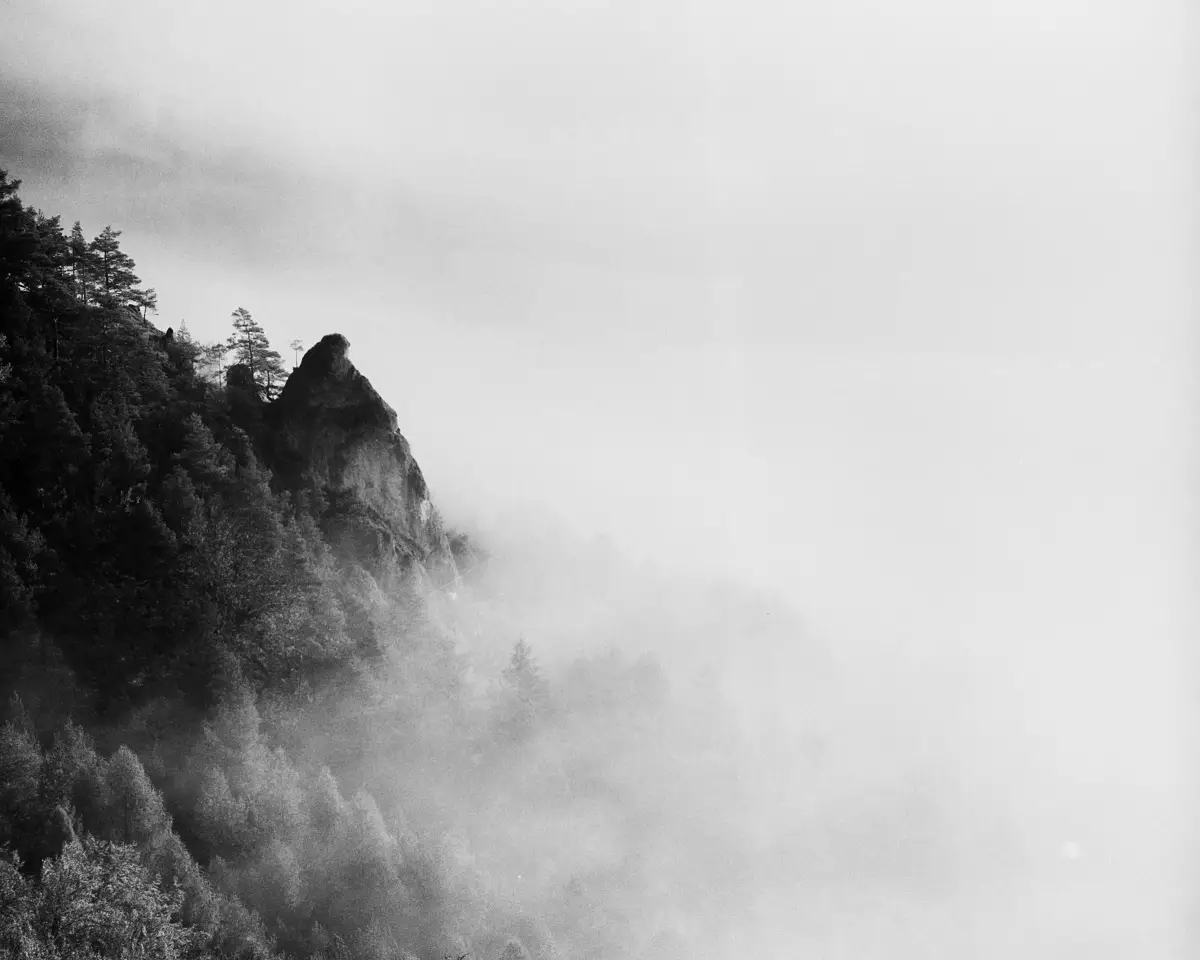
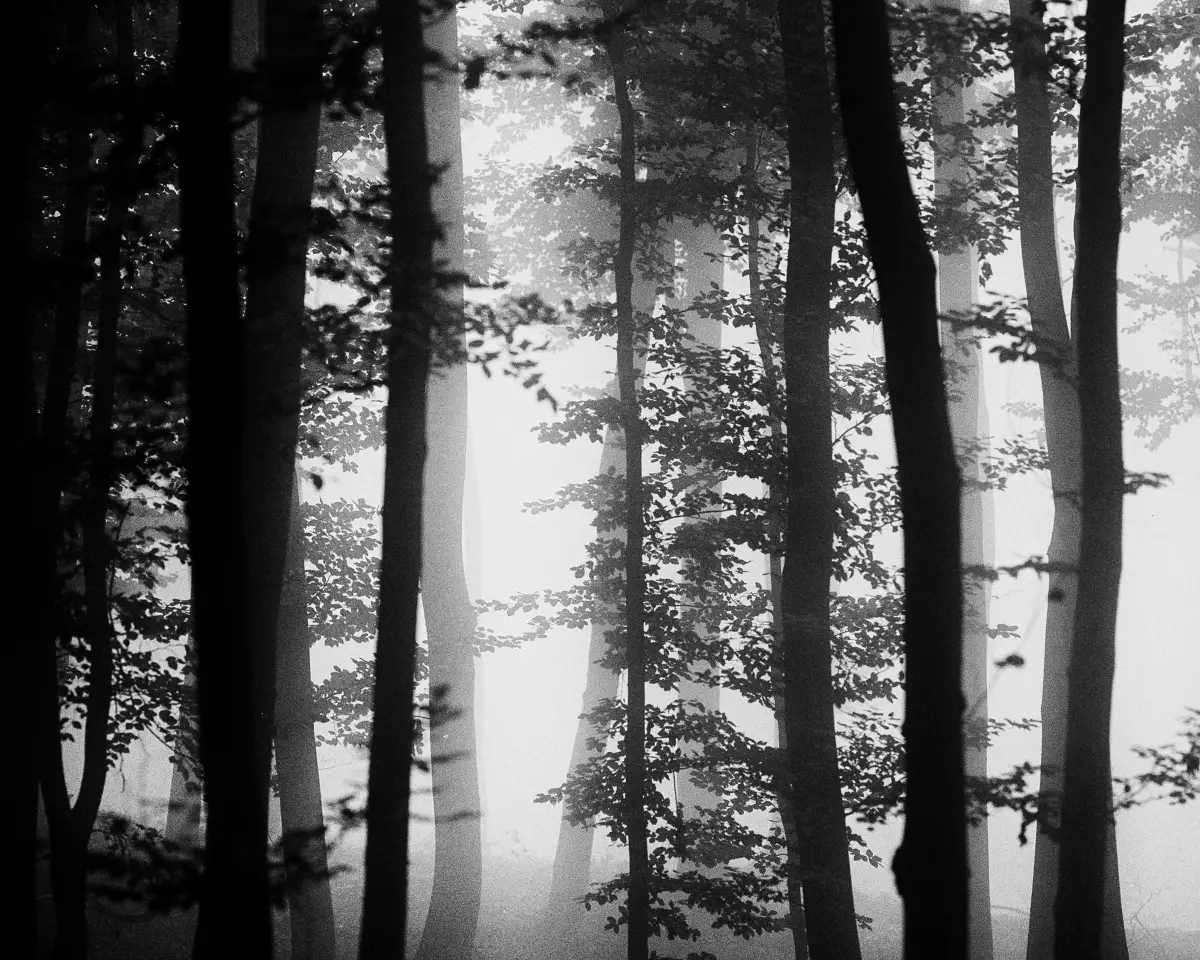
What I like best about this wandering around the mountains is the feeling of surprise, which is already so special nowadays. I remember how I discovered the aforementioned viewpoint on Veľký Manín, whose highest peak is wooded and there is no view from it. Today, almost everyone knows it thanks to Instagram, but in the past, if no one told you about it, you had no way of finding out about it. And you only discovered it by wandering through the forest, trying new paths. And to this day, I still remember the feeling when I set out on a barely visible path and the forest suddenly parted and I was standing on a rock, with an abyss below me and the entire valley to myself.
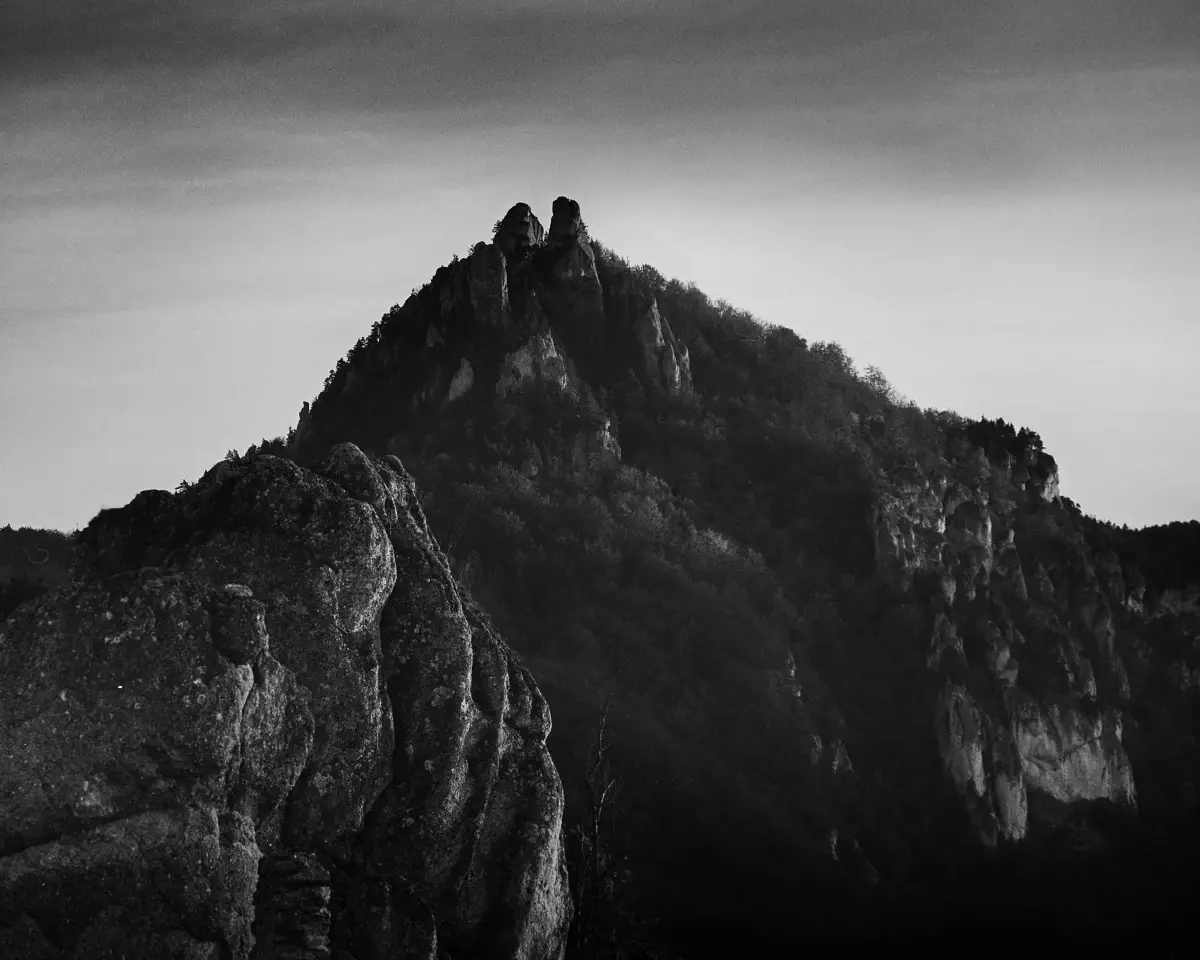
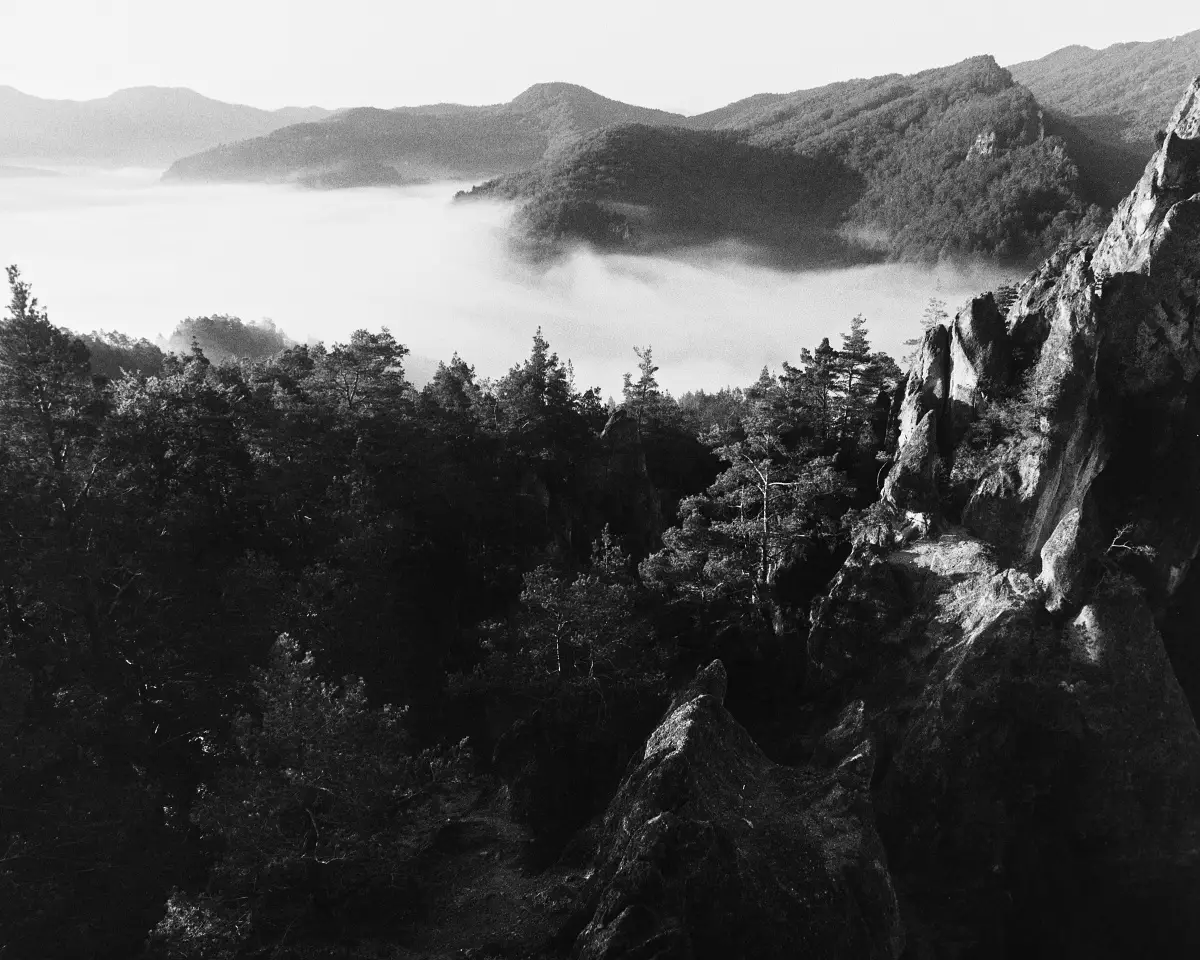
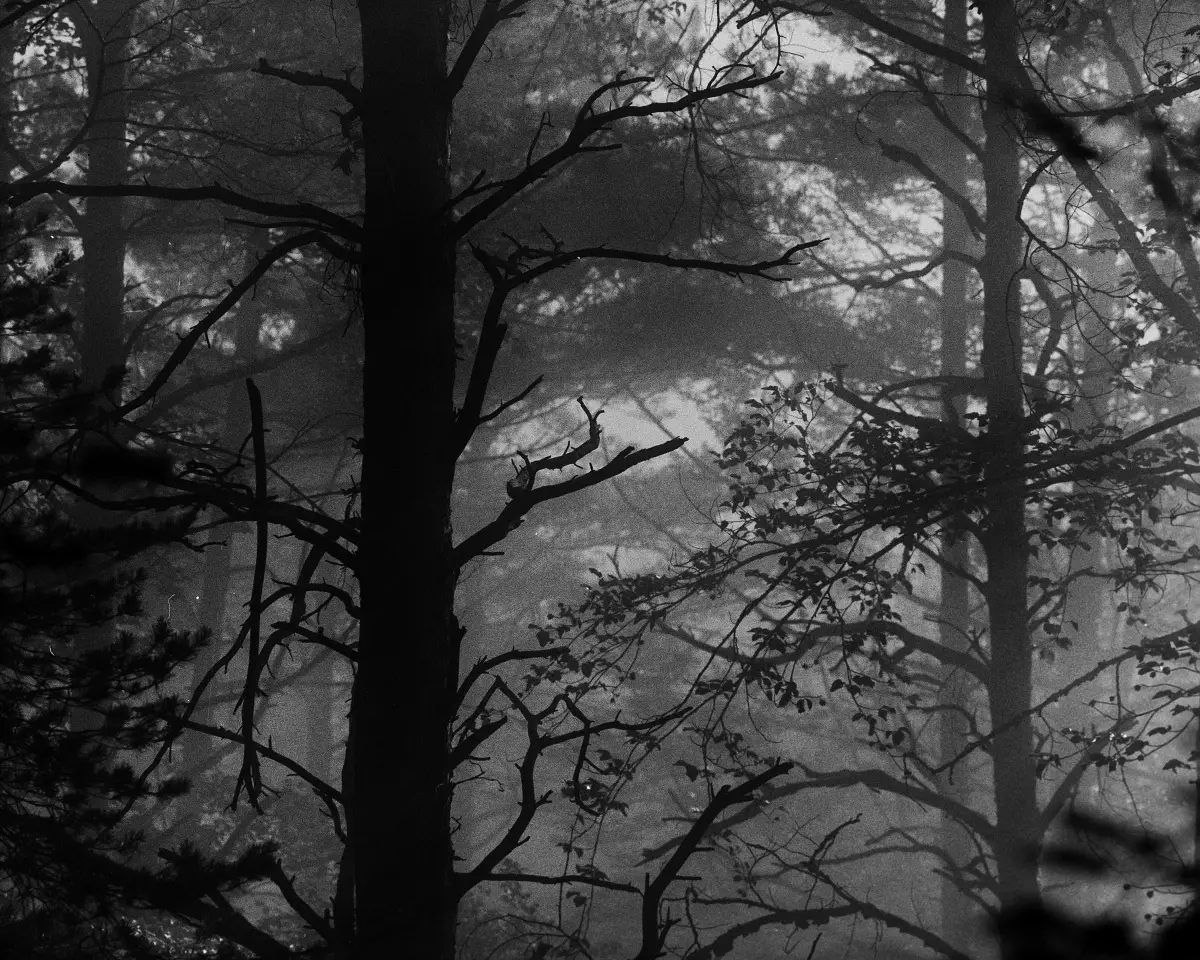
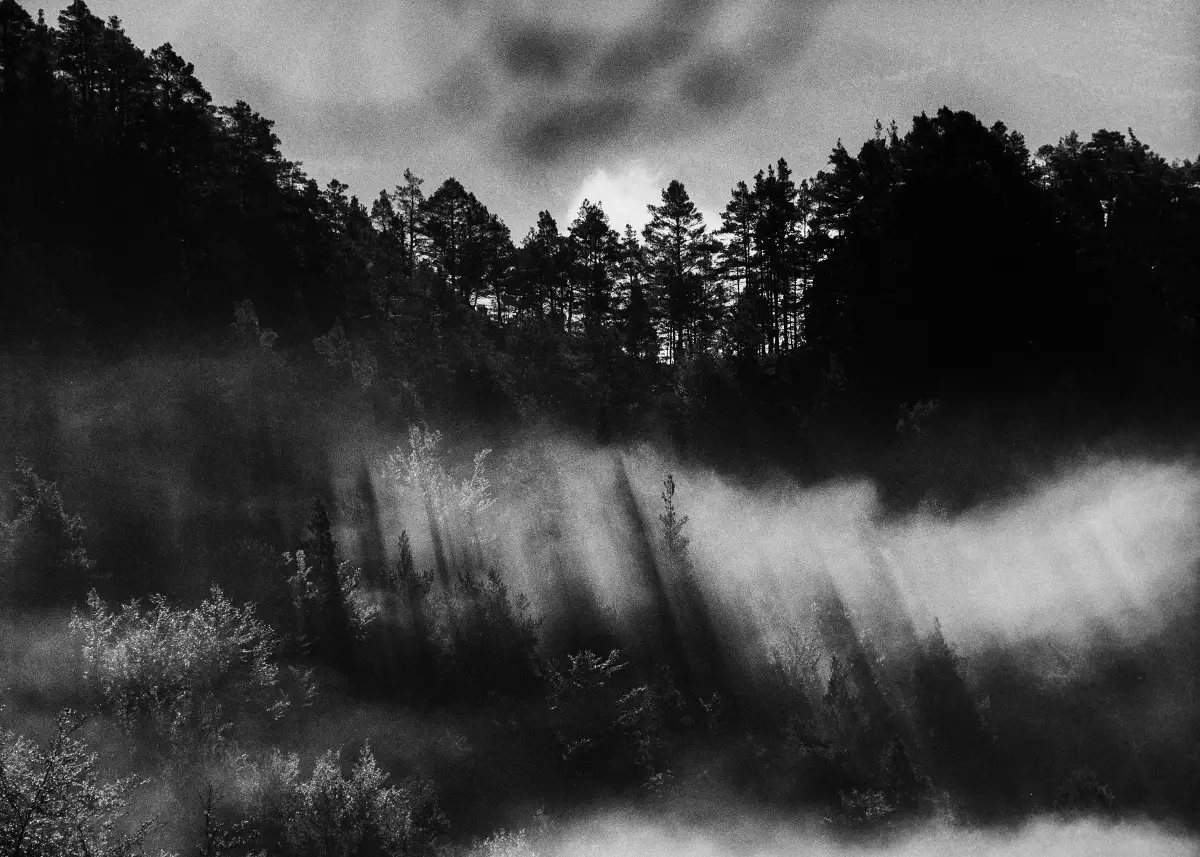
And I try to discover similar places for myself all the time. Sometimes it leads to a dead end – in the sense that it is impossible to go any further – but I still manage to find a place where I have not been and from which the view is not so overlooked.
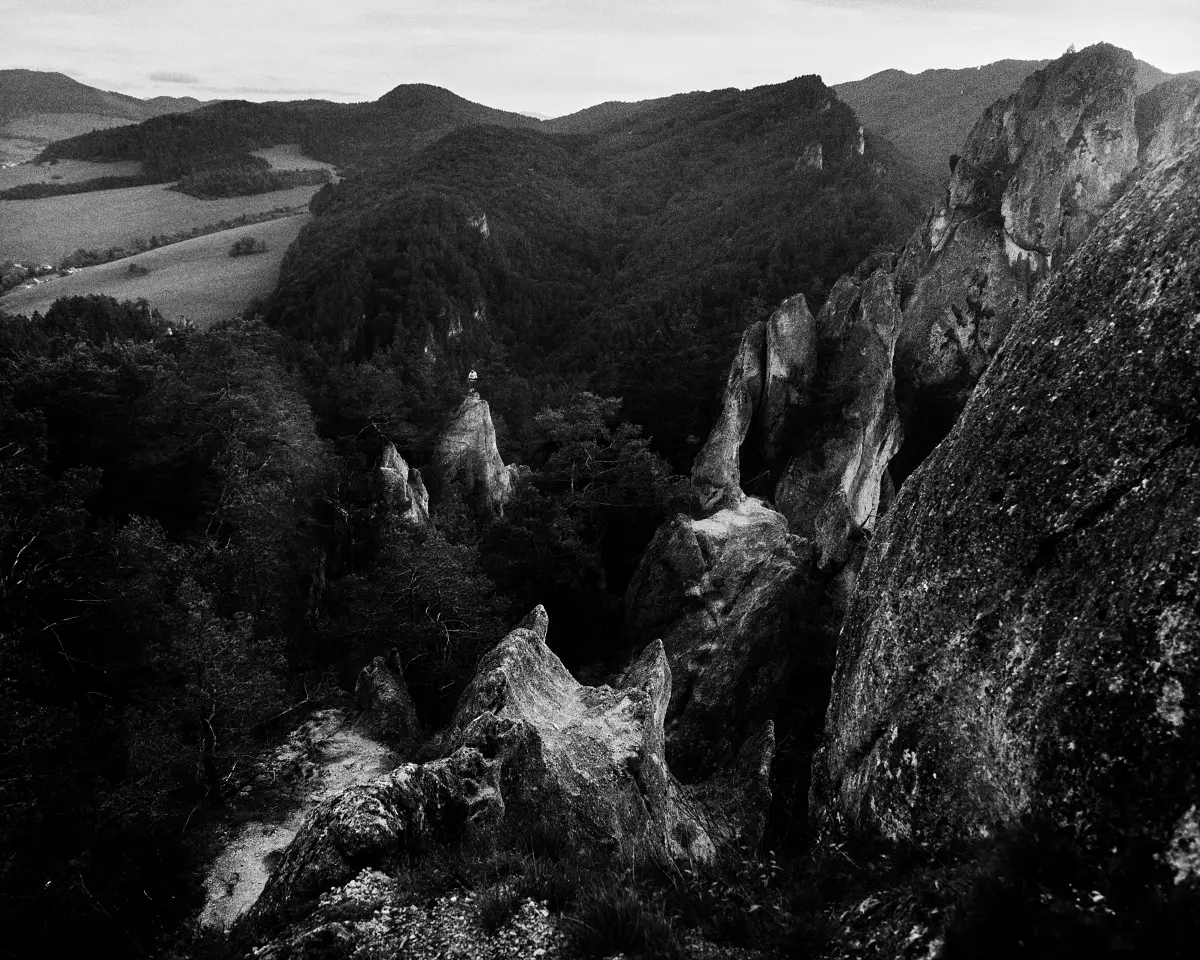
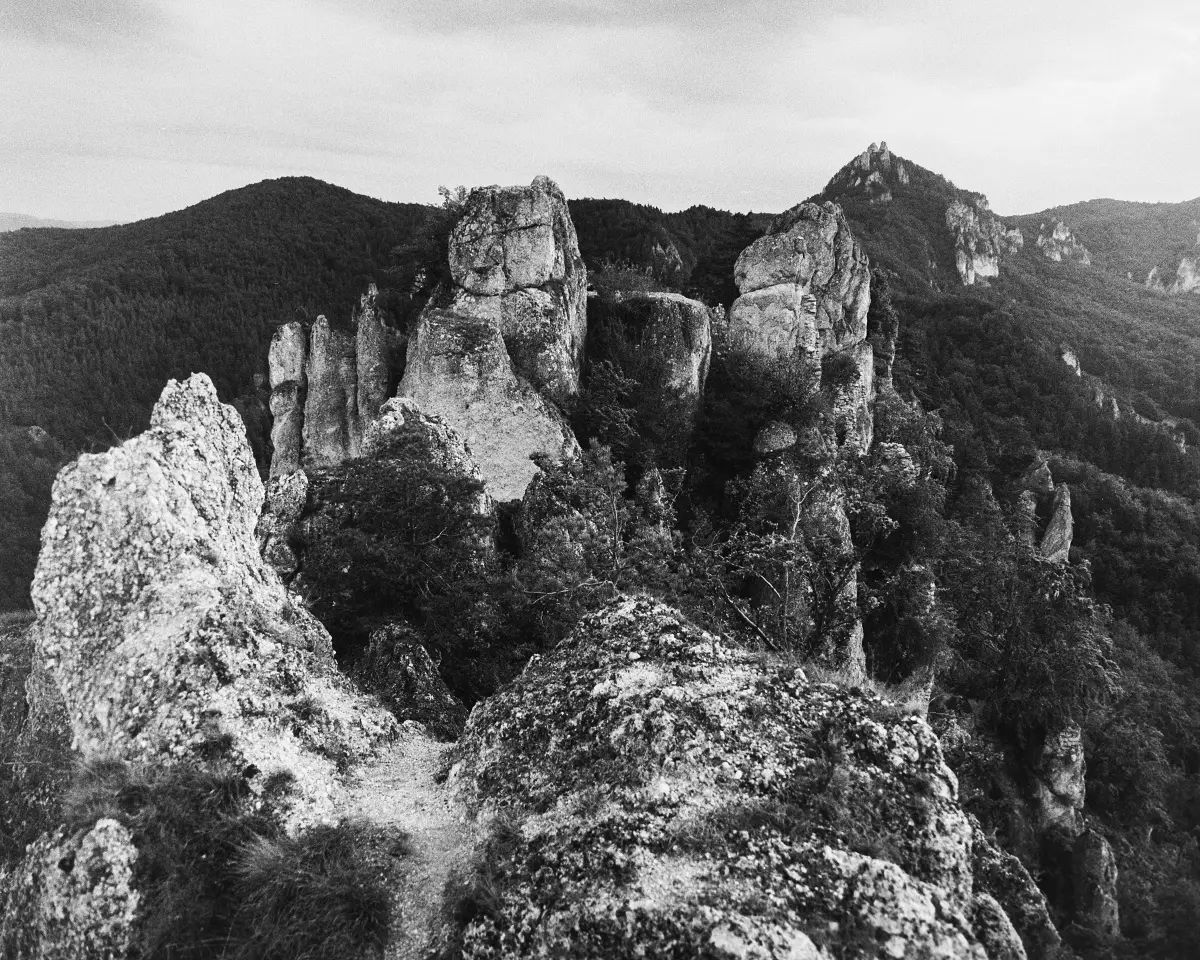
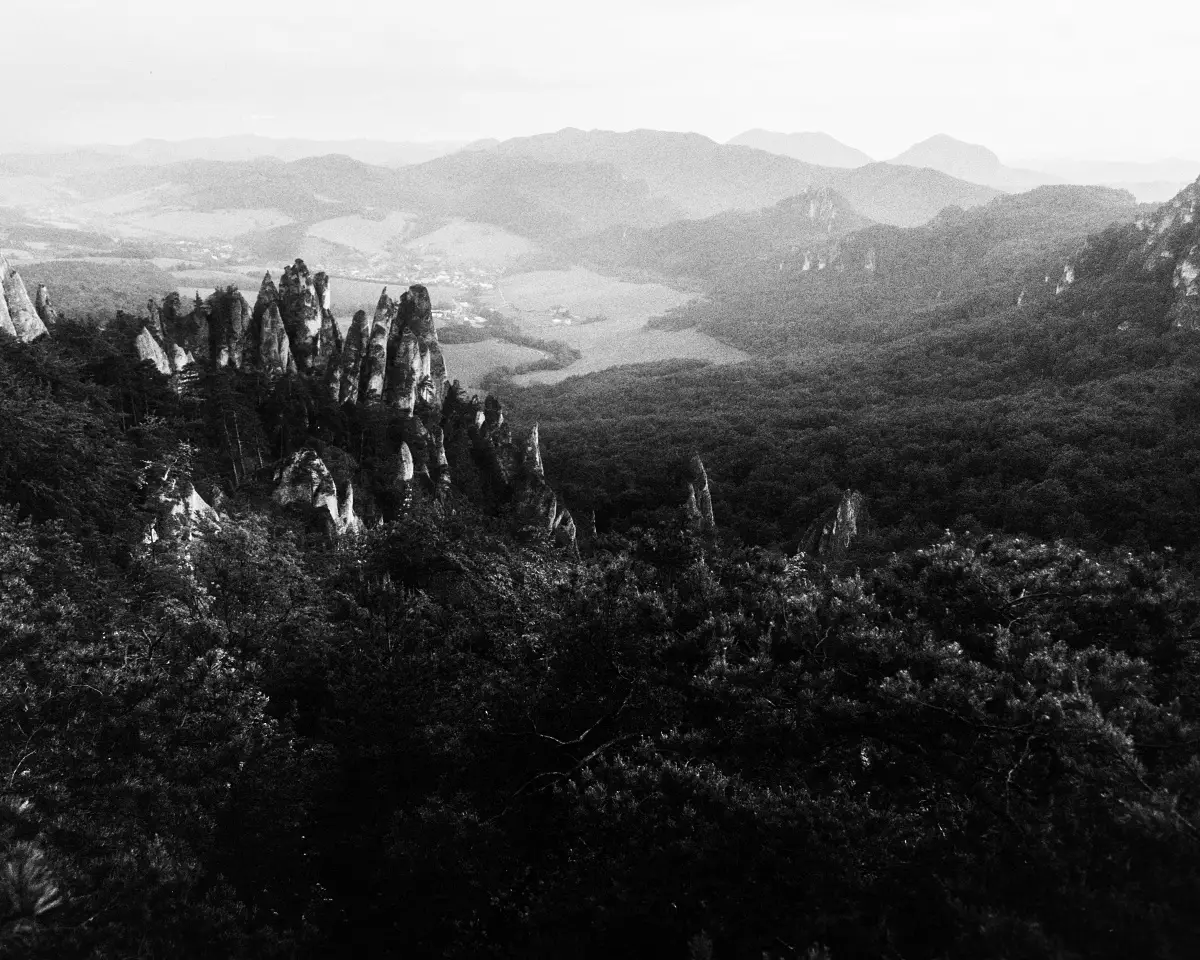
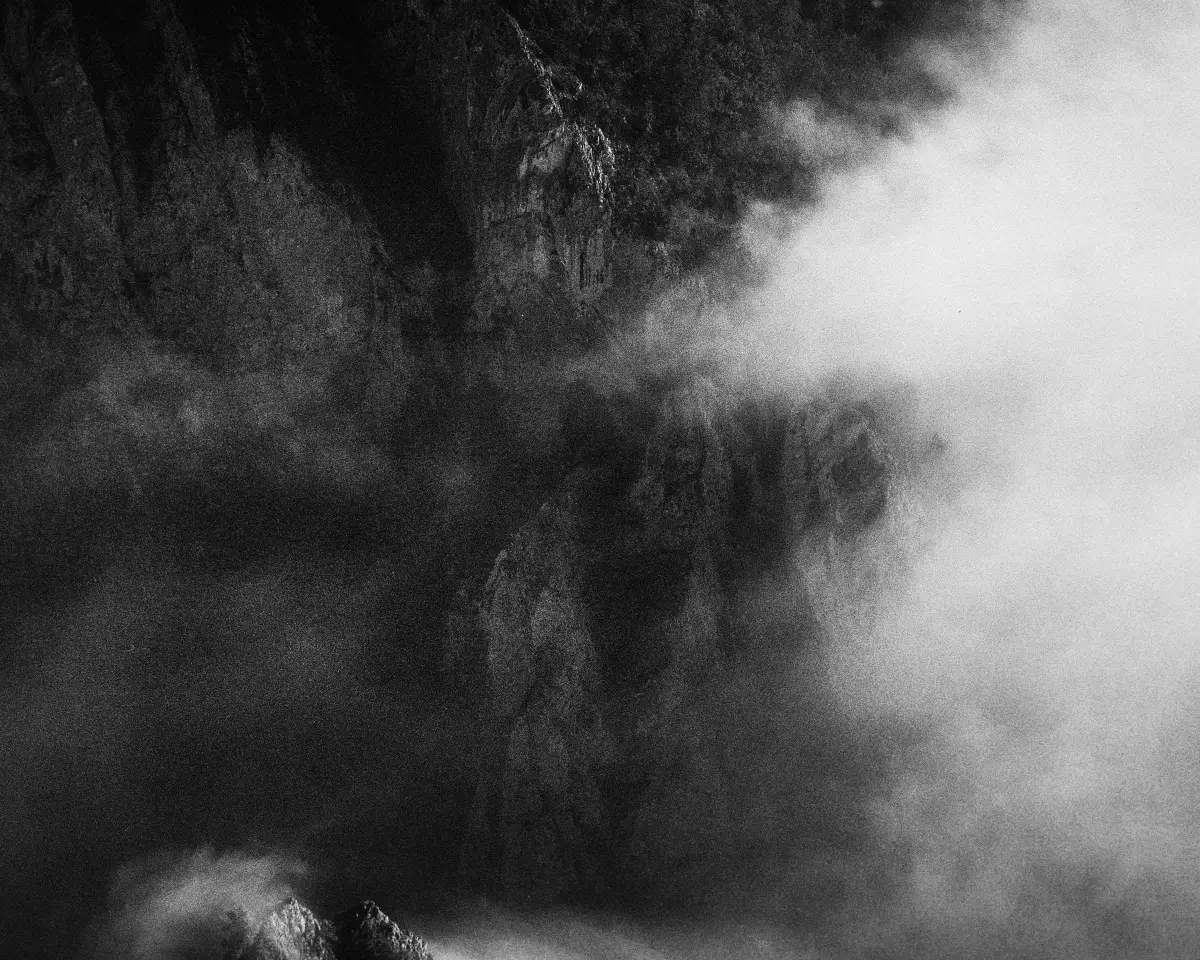
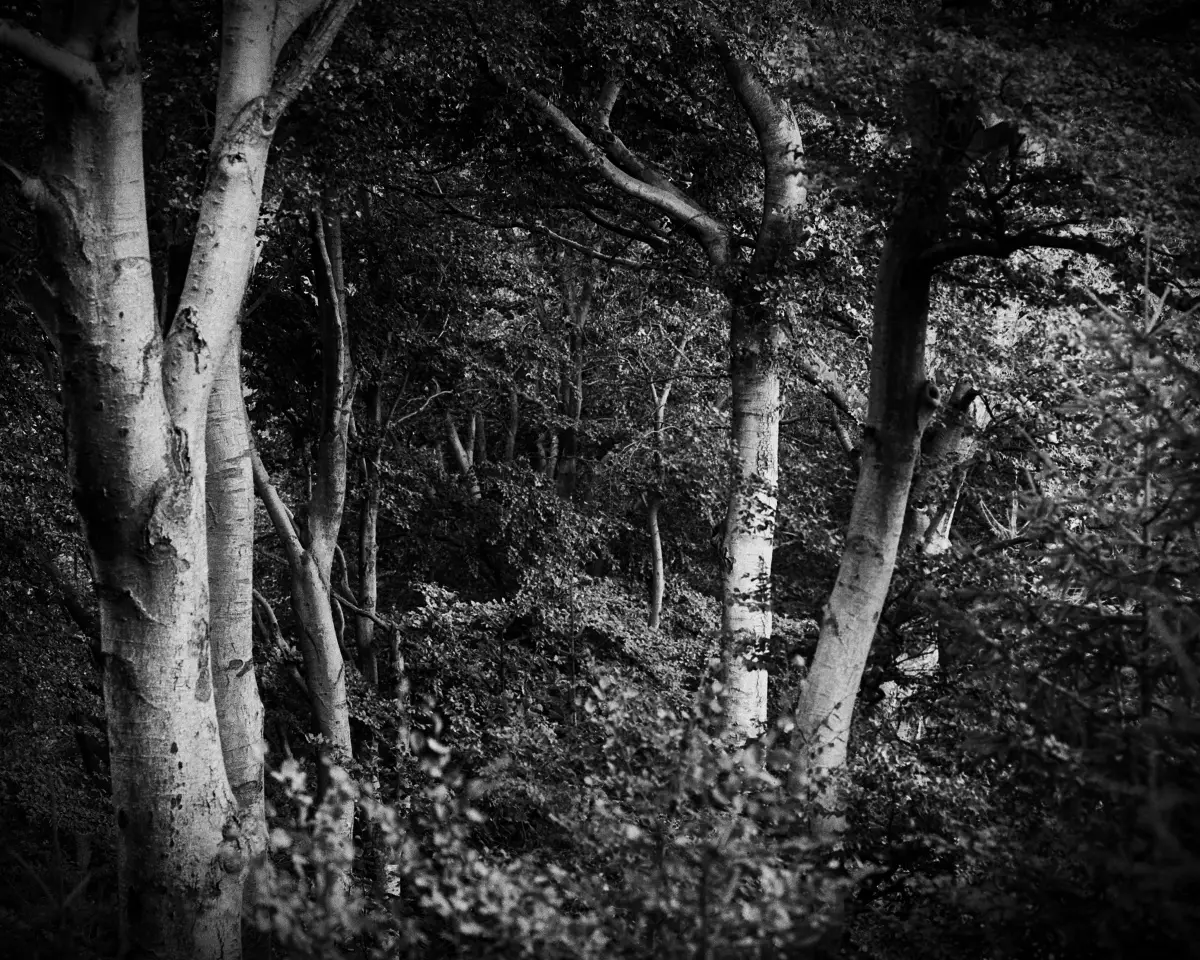
As I wrote above, the mornings here are often shrouded in fog in the fall, which are ideal conditions for working with a long focal length. That’s why my selection also includes photos taken with the Sekor 250mm. All digitized and edited in Lightroom. As the fog scenes are not very contrasty, I was curious how the film would handle it and how the final images would look. To my surprise, they came out exactly as I imagined. When contrasted, the film grain and overall mystical atmosphere stood out even more. A higher quality scan would perhaps benefit the images even more and it could be done with even higher quality, but my next goal is to work towards similar, if not better, results in a darkroom on some warm baryta paper. Winter is coming, so it’s the perfect time to experiment and try. So, in addition to taking photos of winter scenery, I plan to devote a little more time to the positive process and make a series of photos on paper. I am very much looking forward to it and if I get a result that I am satisfied with, I will prepare a separate article about it. I believe it will be sooner than in two years…
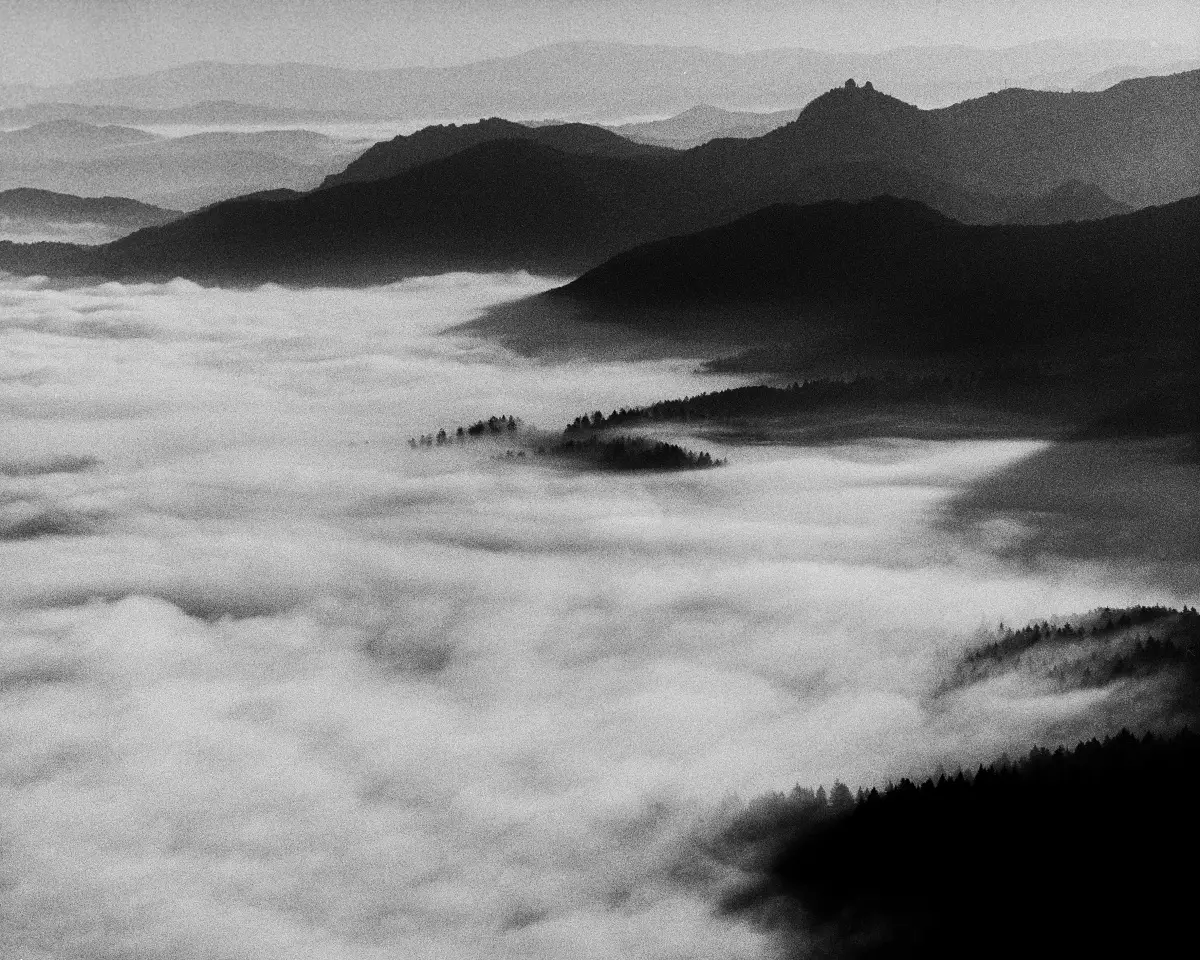
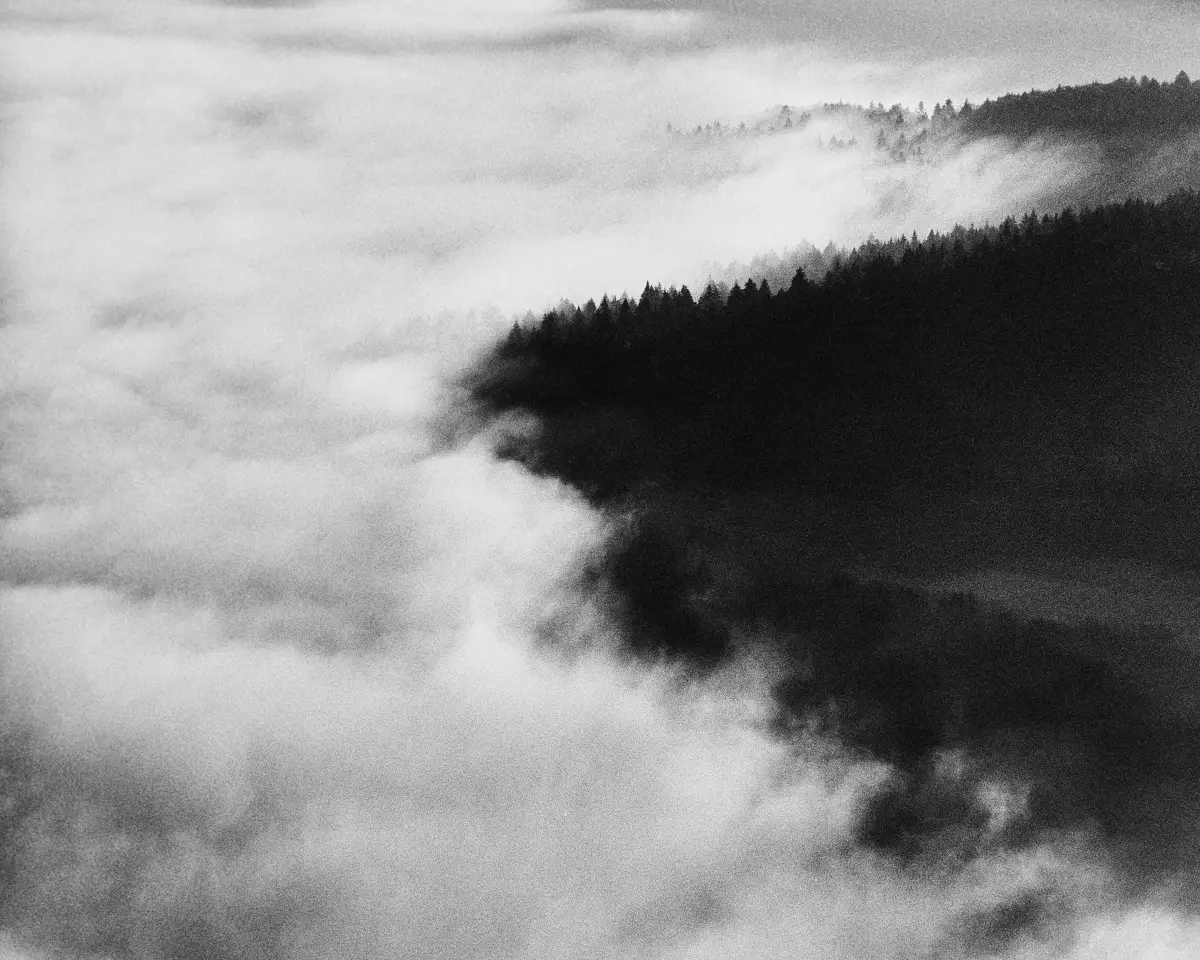
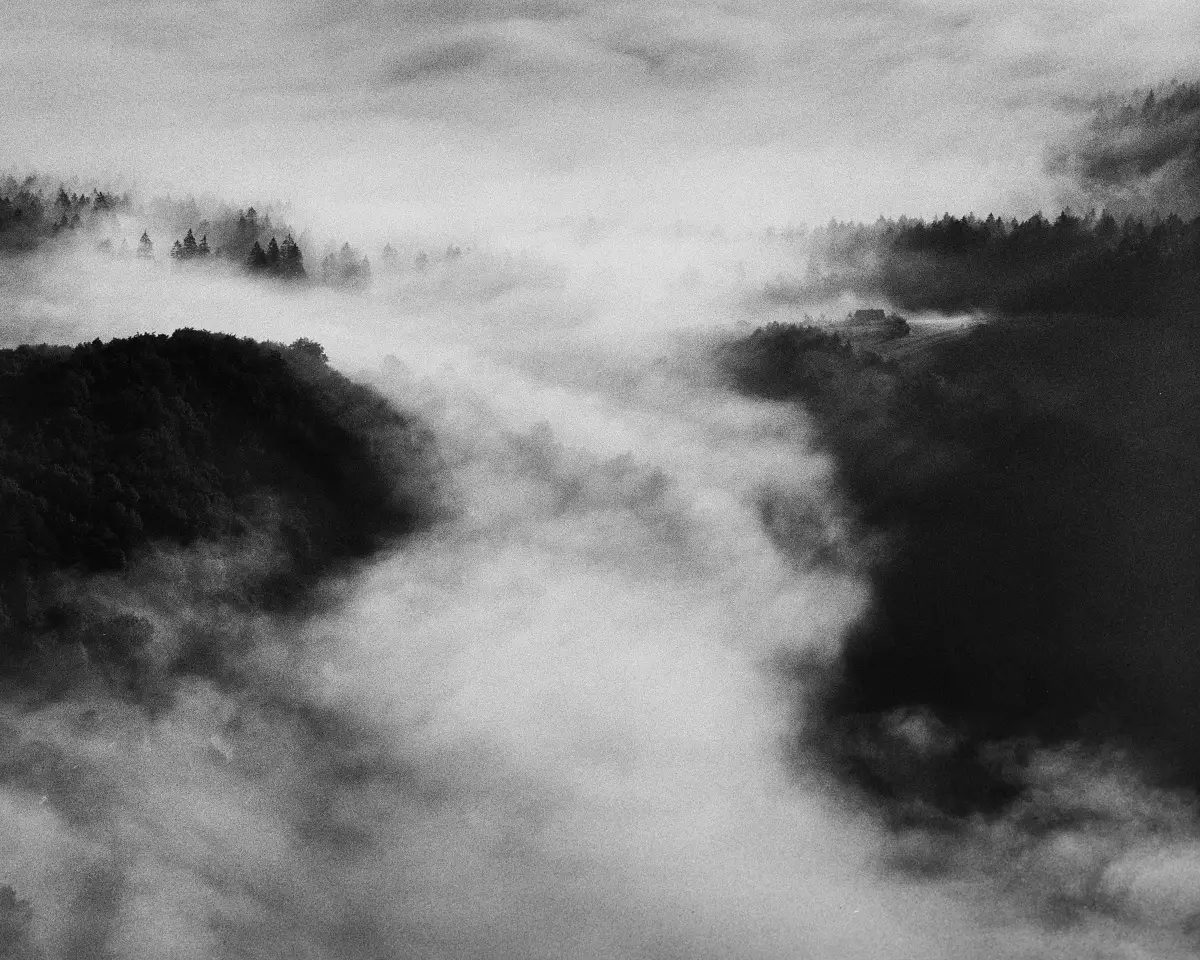
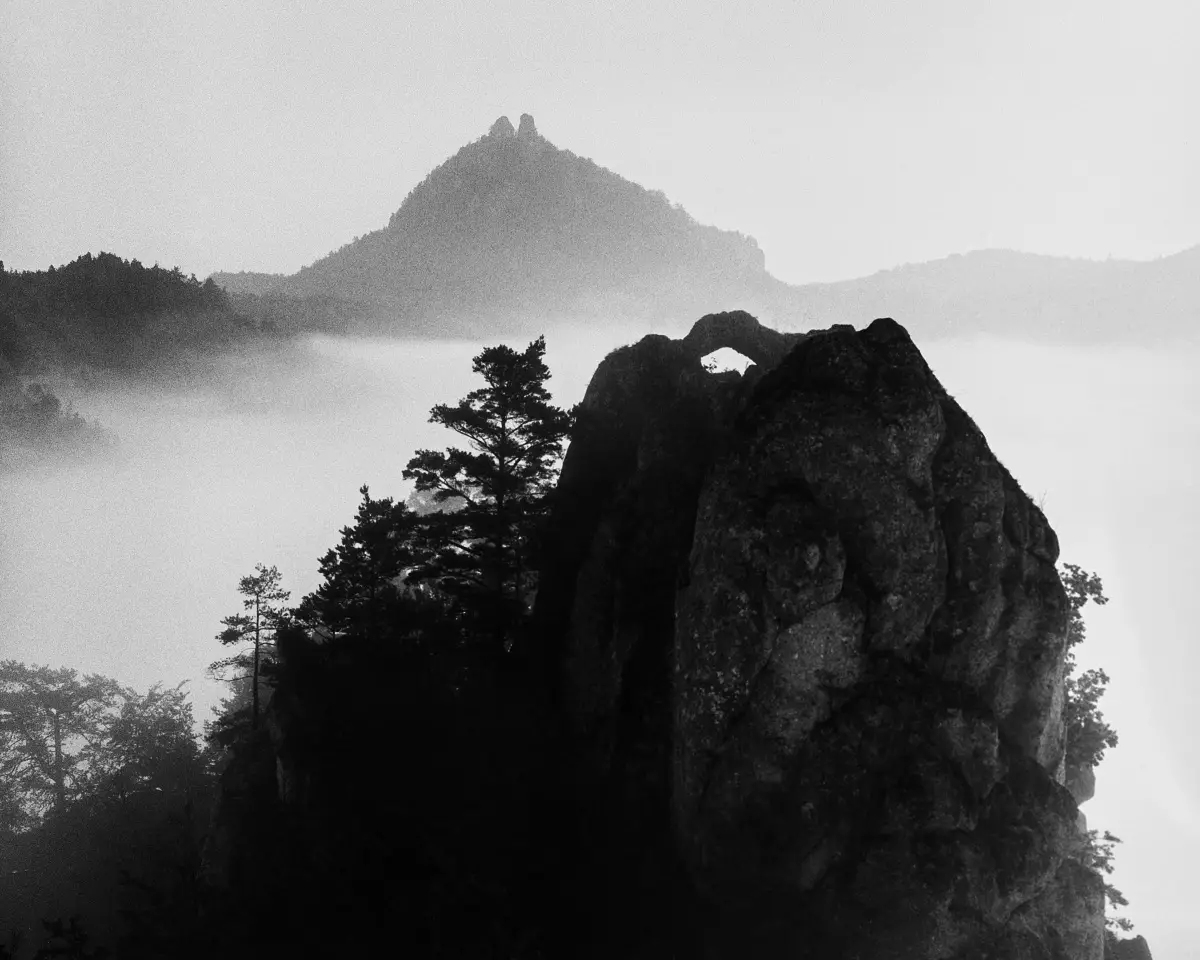
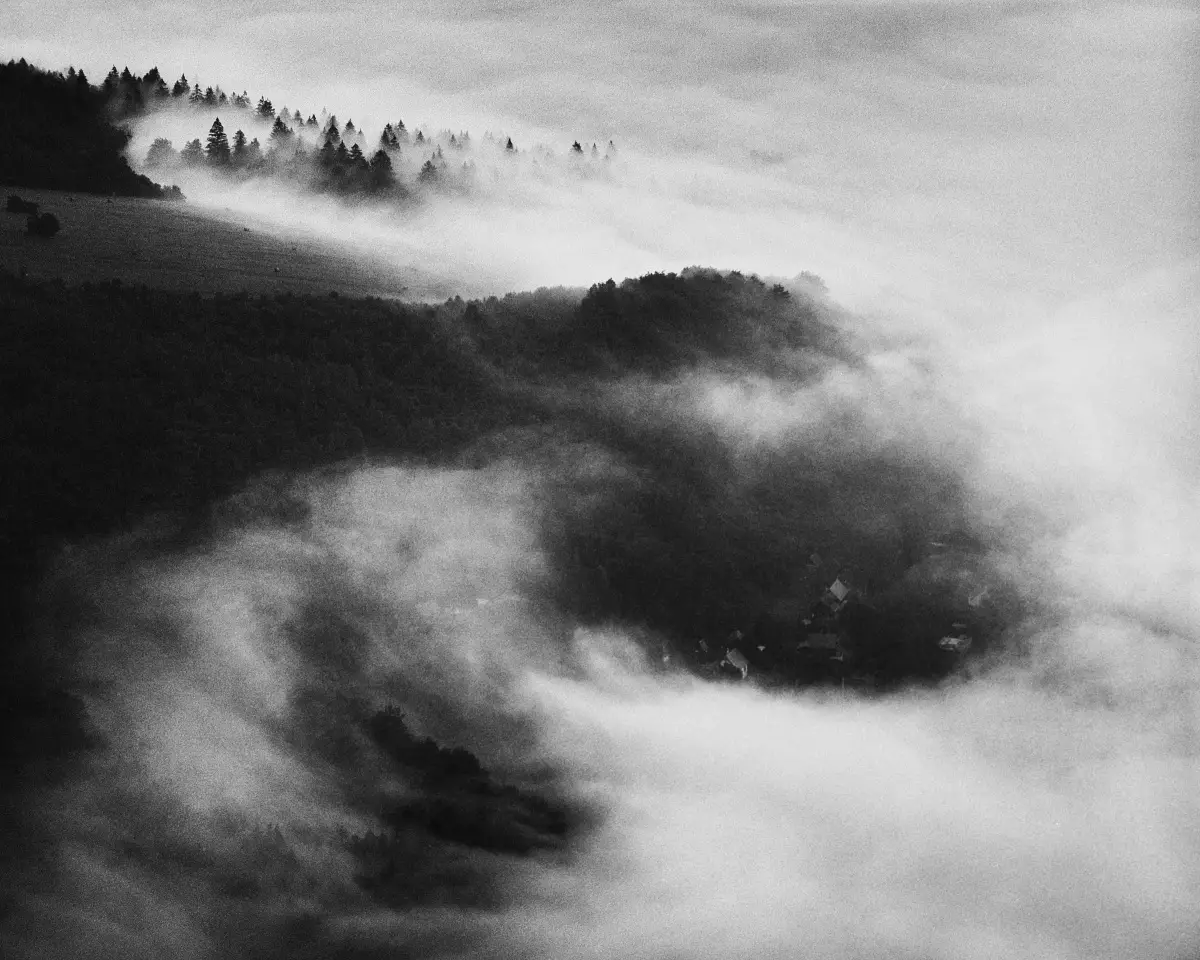
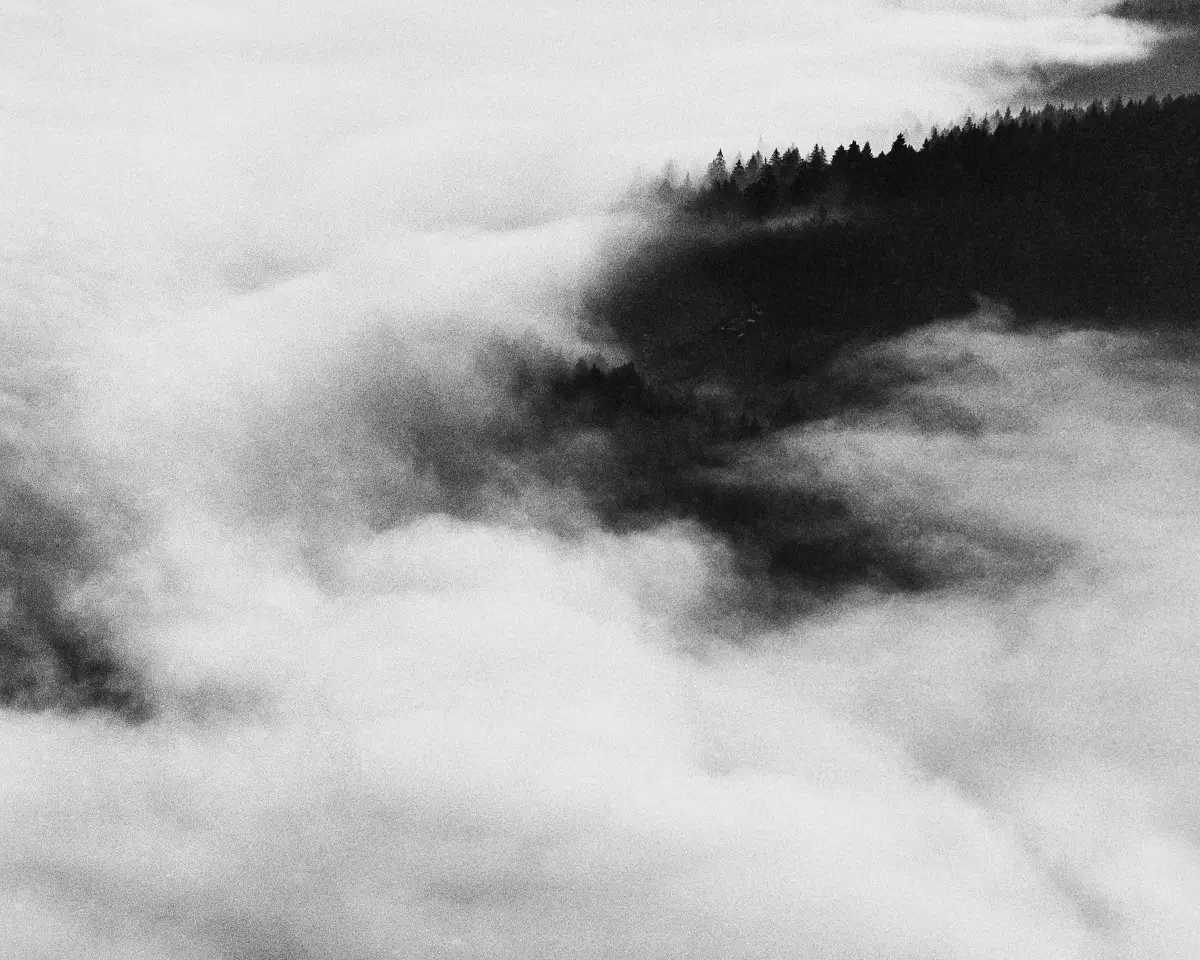
Thank you for reading
If you’re interested, you can also follow me on Instagram
Share this post:
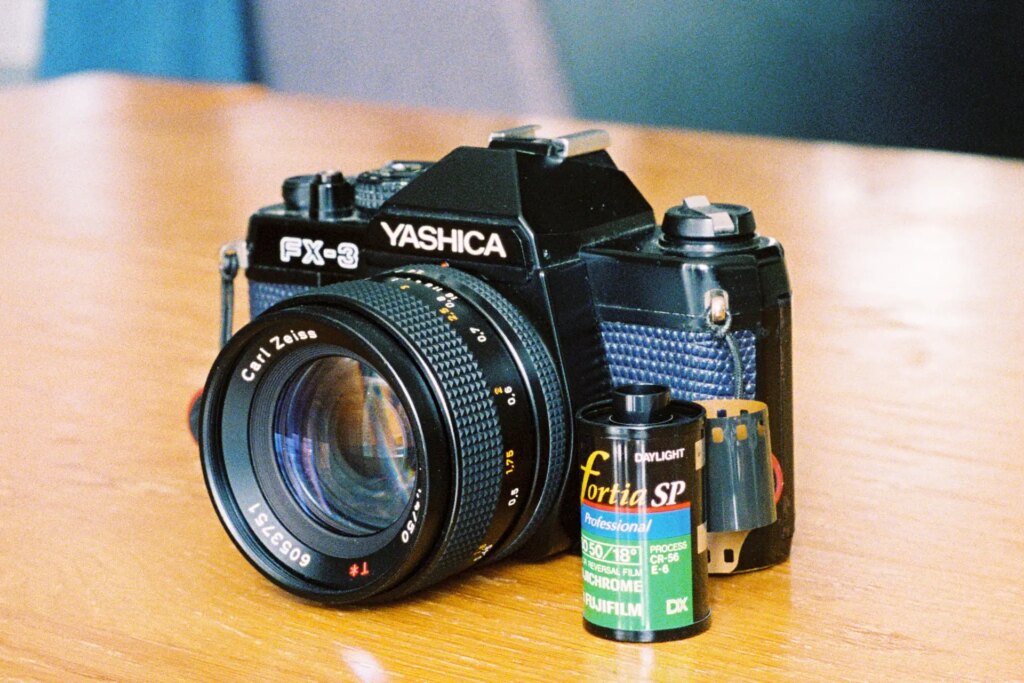
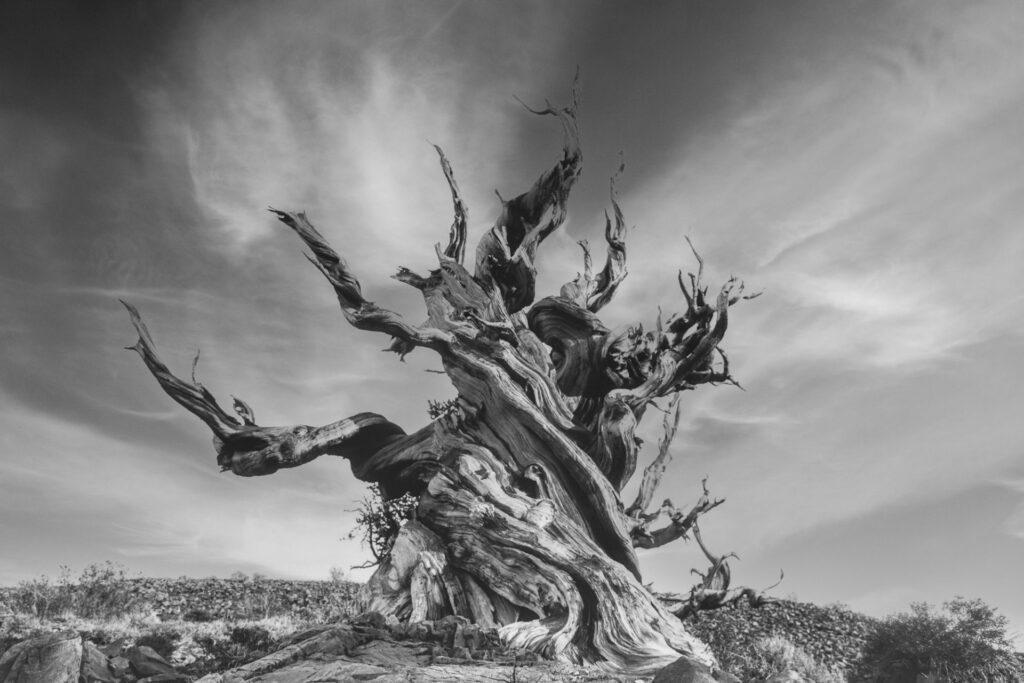
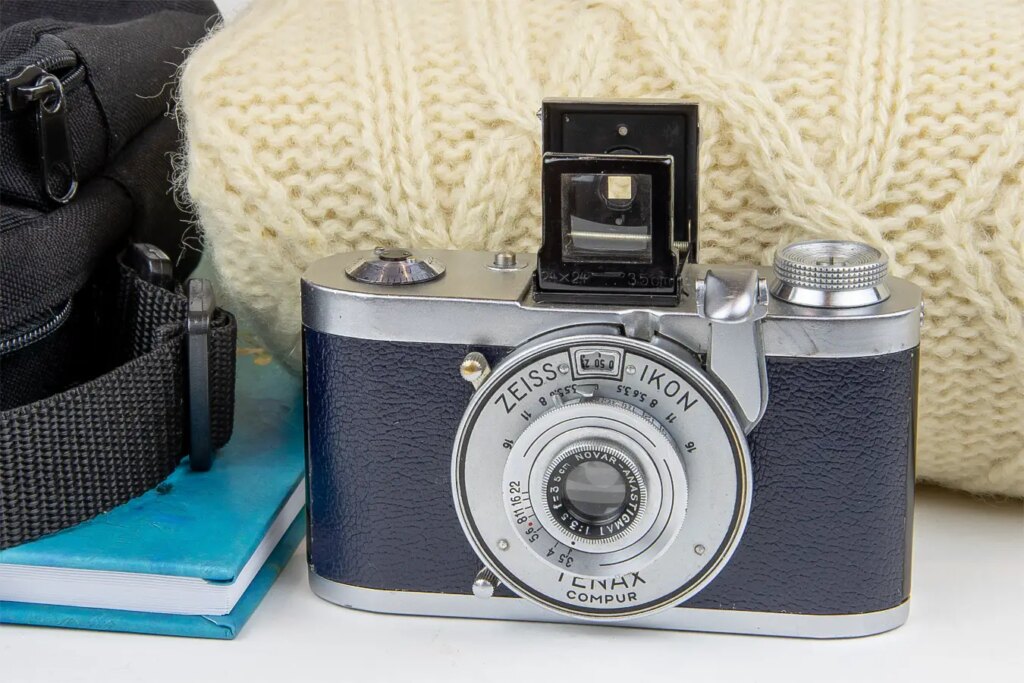
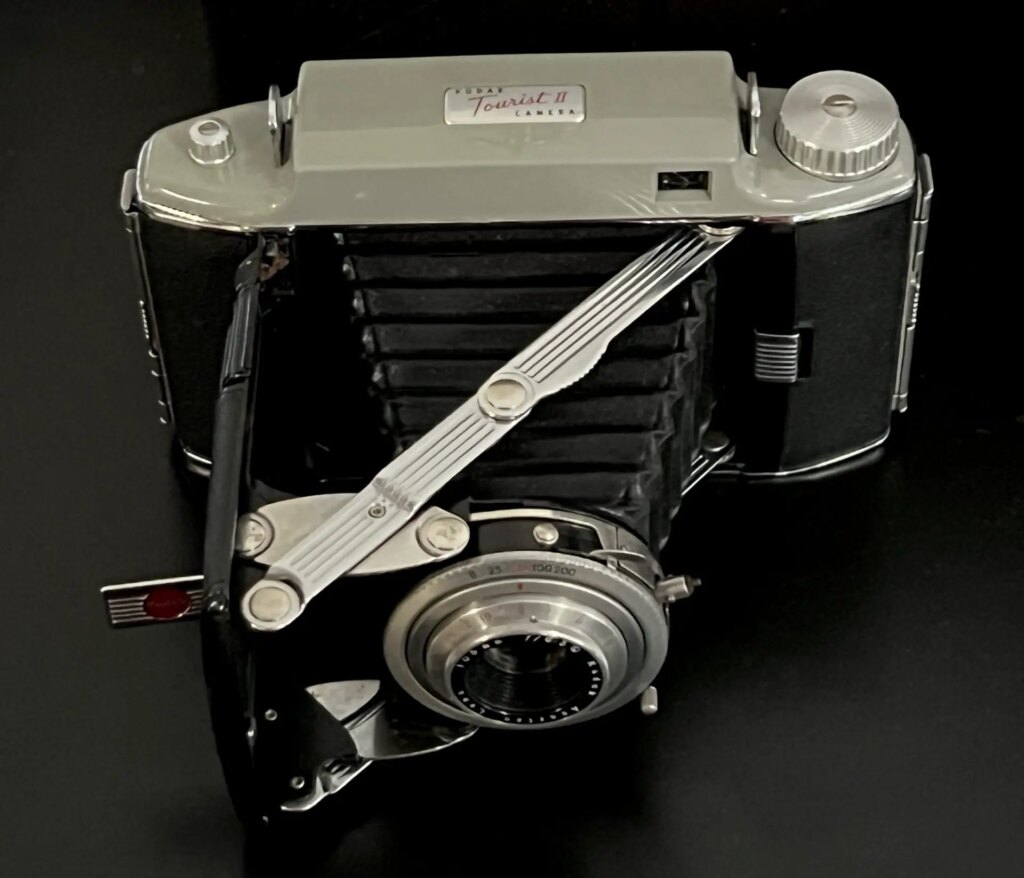




Comments
Simon Casson on Home on Mamiya RB67
Comment posted: 15/12/2023
Comment posted: 15/12/2023
Erik Brammer on Home on Mamiya RB67
Comment posted: 15/12/2023
Harry Weide on Home on Mamiya RB67
Comment posted: 15/12/2023
Great photos, by the way. I've bookmarked the post for future visits. Inspires me to be more active with my Bronica GS-1 (also 6x7).
Giuseppe Papale on Home on Mamiya RB67
Comment posted: 15/12/2023
Giuseppe
Comment posted: 15/12/2023
Brad Hurley on Home on Mamiya RB67
Comment posted: 15/12/2023
Louis Sousa on Home on Mamiya RB67
Comment posted: 15/12/2023
Gus on Home on Mamiya RB67
Comment posted: 15/12/2023
Jim Evidon on Home on Mamiya RB67
Comment posted: 15/12/2023
BTW, your images are stunning.
Roger on Home on Mamiya RB67
Comment posted: 15/12/2023
Philip Huber on Home on Mamiya RB67
Comment posted: 18/12/2023